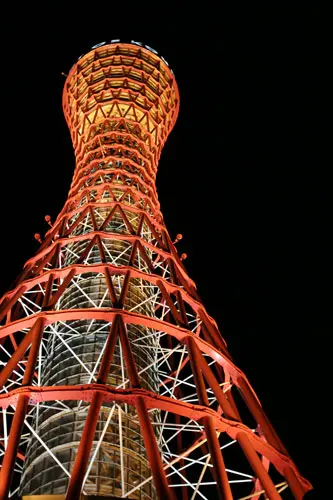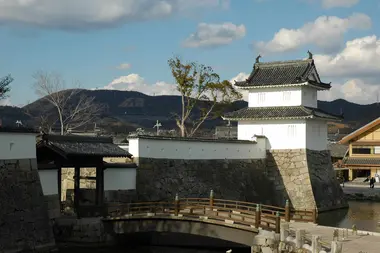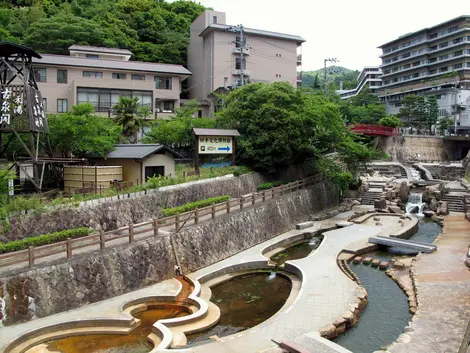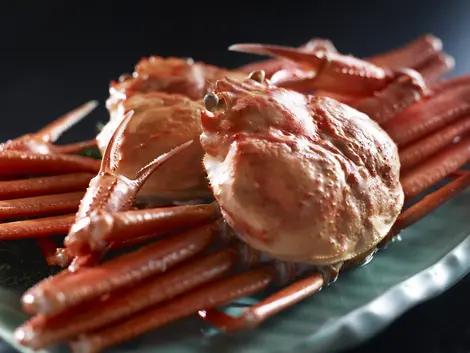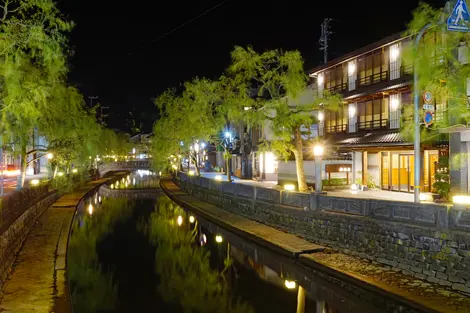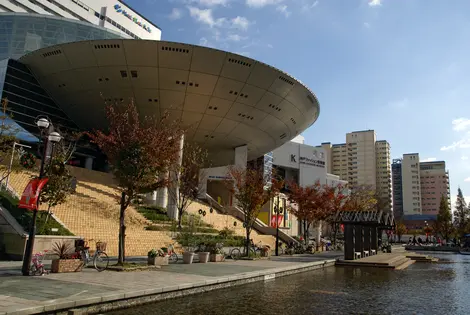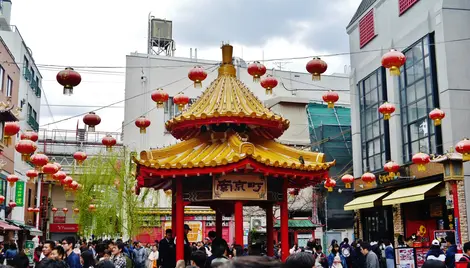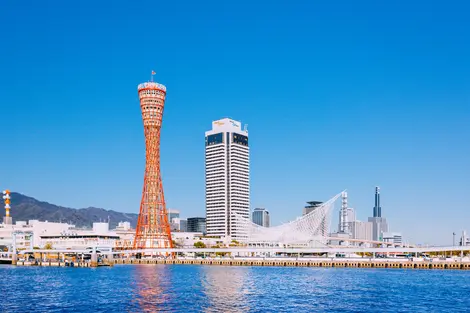Hyogo Prefecture
- Published on : 30/05/2024
- by : Japan Experience
- Youtube
Hyogo Prefecture is located in west central Japan with both Inland Sea and Sea of Japan coastlines with its prefectural capital the port city of Kobe.
Hyogo Prefecture 兵庫県
Hyogo Prefecture is located in the Kansai region of west central Japan and, along with Aomori Prefecture in the far north of Honshu (Tohoku), is the only prefecture in Japan to have both Sea of Japan and Pacific Ocean (Inland Sea) coastlines.
Hyogo Prefecture borders Kyoto Prefecture, Osaka Prefecture, Okayama Prefecture, and Tottori Prefecture. Though it may not come up in conversations about Kansai as immediately as Kyoto and Osaka, it is home to some of the most recognizable destinations in all of Japan.
Even people with just a passing interest have heard of the city of Kobe, the capital of Hyogo Prefecture, which is most well-known for its luxurious wagyu beef. This delicacy is acclaimed for its melt-in-your-mouth marbling. But destinations such as Himeji, Kinosaki Onsen, Awaji, and more await those who are looking to explore one of Kansai's most eclectic locales!
Hyogo is a mainly rural prefecture on its northern coastline and central hinterlands. It's predominantly industrial along its Pacific coast, where the majority of Hyogo's population lives. Throughout the prefecture, beautiful scenery and elegant architecture can be admired.
Around 20% of the land area of Hyogo Prefecture is protected land, including the Sanin Kaigan and Setonaikai National Parks. The Taki Renzan Prefectural Natural Park is also quite notable.
Hyogo Prefecture's main cities and towns include the capital Kobe, with a population of around 1.5 million inhabitants, Akashi, Ako (associated with the tale of the Forty-seven Ronin), Ashiya, Amagasaki, Awaji, Himeji (the second largest city in Hyogo), Itami, Nishinomiya (home of the Hanshin Tiger's Koshien Stadium), Sasayama, Takarazuka, Toyooka (home to the picturesque Kinosaki Onsen), and Yabu.
Weather and Climate
Hyogo has the typical weather patterns of central Honshu, including humid, subtropical summers, and cool winters. The Sea of Japan coastline of Hyogo Prefecture traditionally receives snowfall in winter, whereas the Inland Sea coast will have only occasional flurries of snow. Summers are much wetter than winters.
Attractions in Hyogo
Historic Castles
Hyogo Prefecture has a number of attractions, chief among them the UNESCO World Heritage-Listed Himeji Castle. Himeji Castle is Japan's largest and most spectacular castle and certainly its most visited. The castle is also known as Shirasagijo or Hakurojo due to its bird-like silhouette and the white color of the castle's plaster walls. Himeji is one of Japan's only 12 completely original castles.
The castle is also nearby Kokoen Garden, and the nearby scenery is absolutely gorgeous during springtime and fall! Himeji itself is easily accessible from other parts of Kansai via Shinkansen bullet train. From Kyoto, the journey only takes around 45 minutes via the Tokaido-Sanyo Shinkansen Line using either the Nozomi or Hikari bullet trains.
However, Himeji isn't the only spot in Hyogo with a notable castle history. The Ako Castle Ruins are notable for their connection to the story of The 47 Ronin, and was even used for filming for the tale's movie adaption.
Hot Springs of Hyogo
Of course, Hyogo Prefecture is largely associated with onsens, natural hot springs warmed via underground volcanic activity. The most famous and picturesque onsen town in Hyogo is Kinosaki Onsen, located in Toyooka. Kinosaki is reminiscent of the Japan found in movies and anime and must be seen to be believed. Additionally, it's very tattoo friendly, as seven of its most famous bath houses fully allow tattooed guests. Stay at a traditional ryokan at Kinosaki and enjoy the areas delicious crab cuisine, often taken straight from the oceans nearby. Getting to Kinosaki Onsen from Osaka is done easily with the Kounotori or Hamakaze Limited Express Trains.
Arima is also a very popular onsen location found up in the mountains near Kobe. Arima has a history spanning over 1000 years. The town is built along the banks of the Taki River. During fall, the leaves of the mountains flood the surroundings with gorgeous colors, an amazing sight while relaxing in the baths.
Awaji Island
Located in the Seto Inland Sea between Honshu and Shikoku, Awaji Island is a true treasure of Hyogo Prefecture. One of the coolest spectacles is at the Naruto Ohashi Bridge, where whirlpools (which are called naruto in Japanese) often form in the water.
This island is also home to a rich craft history of fragrant incense, home to many ateliers and workshops that sometimes have interactive experiences. In fact, a majority of domestically made incense sticks (お香) are manufactured on Awaji, lauded for their high quality and distinct fragrance inspired by Japanese nature.
The Awaji Ningyo Joruri Hall is a great way to experience traditional Japanese performance art, hosting a showcase almost daily of a nearly 500 year old form of puppetry.
For more contemporary spectacle, the Hello Kitty Smile facility is dedicated to the iconic Sanrio mascot. Multi-media art shows and galleries offer a one-of-a-kind means of engaging with the world-beloved, ribbon-donning cat!

View from Sumoto Castle
By 663highland - Own work, CC BY 2.5, https://commons.wikimedia.org/w/index.php?curid=25103766
Kobe, the Capital
Kobe, Hyogo's largest city and the sixth largest city in Japan, is a busy port, with an international, cosmopolitan feel due to its Chinatown and historic western-style houses in Kitano-cho. Now completely rebuilt after the devastating Great Hanshin Earthquake of 1995, Kobe is a fun-filled city with a number of interesting museums and places of entertainment including the man made islands of Port Island and Rokko Island. Meriken Park and Harborland are more recent land-fill developments in the bay. Kobe Maritime Museum in Meriken Park has an exciting modernist exterior and a collection of model ships and audiovisual displays. Hyogo Prefectural Museum of Art was designed by Japan's world famous architect Tadao Ando with a collection heavy on 20th century works from Japan and abroad, especially sculpture and prints. Nearby is the fascinating Kobe Earthquake Museum (a part of the Disaster Reduction and Human Renovation Institution). Kobe Fashion Museum, on Rokko Island, was Japan's first fashion museum.
History of Hyogo
Hyogo Prefecture is made up of the former provinces of Awaji, Harima and Tajima as well as parts of Tamba and Settsu.
At the end of the Edo Period, Kobe was opened as a Treaty Port to the Western powers and grew into an important, international trading hub. During the earlier Kamakura Period of Japanese history, the city, then known as Hyogo, had conducted trade with China.
Kobe as a city was established during the Meiji Period in 1889 and became an important gateway for westernization in Japan. During World War II, Kobe unfortunately suffered hefty damage, the famous Himeji Castle included. Fortunately, it has recovered to become a city revered for its elegant atmosphere.
Access to Hyogo
In Hyogo's largest city, Kobe, Shin-Kobe Station is the primary hub of commute, but Shinkansen bullet trains stop at both Shin-Kobe Station and Himeji. From Tokyo Station, Shin-Kobe is approximately 2 hours and 45 minutes by Shinkansen, from JR Nagoya Station in Nagoya, Shin-Kobe is 1 hour, 5 minutes and from Kyoto Station just 28 minutes. From Okayama Station in Okayama, Shin-Kobe is 36 minutes and from Himeji Station it takes only around 15 minutes by Shinkansen. Hyogo, as a part of the Kansai Region, is easily accessible from prefectures such as Kyoto and Osaka via Shinkansen bullet trains or express trains within the area. Kyoto to Himeji is a popular trip and can be done directly with the Tokaido-Sanyo Shinkansen. This journey takes less than an hour and Kyoto is a popular destination that itself is easily traveled to from Tokyo. From Osaka to Kinosaki Onsen is a popular journey for those looking to go from discovering a bustling city to relaxing in a picturesque hot spring town.
Kobe-Sannomiya Station is the major commuter train station in Kobe with connections to Umeda Station and Namba Station in Osaka on the Hanshin Line and to Kintetsu Nara Station (via Namba).From Sannomiya Station there are Hankyu trains to Akashi and Himeji on the Kobe Kosoku Line and to Osaka (Umeda), Takarazuka, Imazu, Kyoto Kawaramachi Station and Kita-Senri on the Hankyu Kobe Main Line.
Sannomiya Station is also a stop on the Kobe subway and Port Liner to Kobe Airport. Many of these trains are accessible with regional rail passes or the National Japan Rail Pass.
There are daily express highway buses from Sannomiya Station to a variety of destinations in Tokyo, including Shinjuku Bus Station, Tokyo Station and Ikebukuro. Other long-distance limousine buses go to Awaji, Himeji, Kawagoe, Kinosaki Onsen, Kyoto, Osaka, Yokohama and Yumura Onsen.
For those traveling by car, the main highways running through Hyogo are the Meishin Expressway from Nagoya and the Hanshin Expressway from Osaka. The Sanyo Expressway connects Kobe to Yamaguchi.
Hyogo's two major airports are Osaka International Airport located in Itami, and Kobe Airport, opened in 2006 on a reclaimed island south of Port Island. Kansai International Airport (KIX) in Osaka is the Kansai area's main international hub. There are transfoes to and from Kansai International Airport between Osaka and Kyoto, and from both cities, Hyogo can be accessed via other trains.

